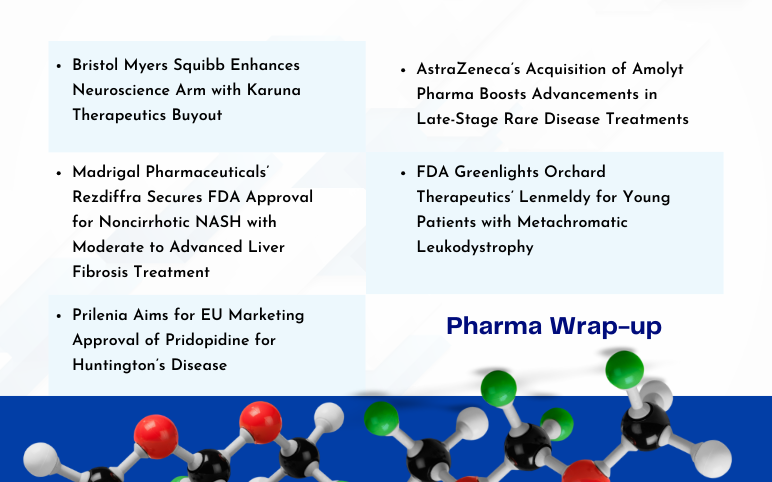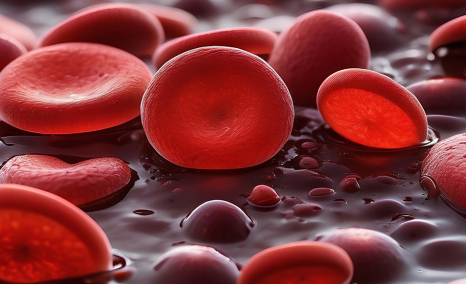The Gastroparesis market size in the 7MM was found to be USD 3,170.01 million in 2019 and is anticipated to increase at a CAGR for the study period 2017-2030 owing to dynamic pipeline therapies in the mid-/ late-stage clinical development and rising gastroparesis prevalence.
Gastroparesis or Delayed gastric emptying is a condition where a stomach finds it difficult to empty its contents and takes longer than usual. The disorder is a cause of lack of motility of muscles of the abdomen, thus referred to as ‘stomach paralysis.’ The reason behind the non-motility of the stomach muscles is the damaged vagus nerve that guides the movement of gastric contents throughout the digestive tract.
The causes of Gastroparesis can be many including infections, endocrine disorders like hypothyroidism, diabetes, medications that slow down gastric-emptying, connective tissue disorders like scleroderma, autoimmune conditions, neuromuscular diseases, psychological conditions, surgery of the esophagus, eating disorders (anorexia nervosa or bulimia), certain cancers, and many others. However, if the cause remains unknown, it is referred to as idiopathic. Among the major types of Gastroparesis, i.e., idiopathic, diabetic, and post-surgical Gastroparesis, Idiopathic Gastroparesis accounted for a higher number of gastroparesis cases. In 2019, as per Gastroparesis epidemiological analysis, there were approximately 14,665,140 cases of idiopathic Gastroparesis, and 8,621,552 cases for diabetic Gastroparesis in the 7MM.
Moreover, DelveInsight estimated the total gastroparesis prevalent population in the 7MM to be 34,057,658 in 2019; however, the total diagnosed gastroparesis prevalent population was estimated to be 15,633,997 in 2019. It is noteworthy to mention that this condition is underdiagnosed and has a diverse etiology. Furthermore, Gastroparesis is highly predisposed to females as compared to males. This could be due to a relatively shorter Gastrointestinal reflux in females as compared to males. As already mentioned, the disorder primarily affects young women, especially in the case of idiopathic Gastroparesis. Moreover, many of the patients diagnosed with Gastroparesis are obese.
Although the disease and its symptoms are very well understood, there is a critical unmet need to provide treatment to the patients, address comorbidities, and improve their quality of life. The poor diagnosis rate of the disease is another unmet need prevailing in the Gastroparesis market. To prescribe a proper treatment regimen, many researchers emphasize the importance of categorizing the condition based on severity. It was estimated that mild cases are more prominent in comparison to moderate-to-severe gastroparesis cases. For instance, mild-gastroparesis can be controlled by dietary modifications and with precautious use of medications that slow down the gastric emptying. However, for moderate-to-severe cases, medications exist in the gastroparesis market that proffers relief.
However, it is grim to note that the course of the disease for most patients, either with dietary controls or medications, does not improve over time.
Gastroparesis Market: Influx of Pharma players and novel pipeline therapies
At present, Diet-regulation is one of the mainstays of gastroparesis treatment. Patients are advised to abstain from the intake of fatty foods, raw fibers, or foods that take longer to digest. In addition to nutritional assessment, the gastroparesis market provides few approved medications to treat the disease. The medications available include Prokinetic Agents, antiemetic agents (off-label), and antianxiety benzodiazepine agents (off-label). Prokinetic agents such as metoclopramide, domperidone, and erythromycin, increase the rate of gastric emptying and decrease symptoms in patients with Gastroparesis. Metoclopramide, sold under the brand name Reglan, is the first and only FDA-approved therapy for the treatment of Diabetic Gastroparesis. It carries a “black box warning” because it is generally not well-tolerated. Its chronic use (>12 weeks) may lead to extrapyramidal side effects and potential irreversible tardive dyskinesia. Presently, several generic versions of the drug are available in the gastroparesis market. Domperidone is another medication, similar to metoclopramide; however, it acts on peripheral receptors; thus there are no reported adverse side effects. However, the drug is not FDA-approved but is available in some European countries. Earlier, Cisapride, which was available in the gastroparesis market, was taken off the market because of the complications of cardiac arrhythmias in patients.
Antiemetic agents, including ondansetron and granisetron, are the second most prescribed therapies available in the gastroparesis market. These agents are used to control nausea and vomiting in gastroparesis patients. Additionally, to address gastroparesis’ psychological symptoms, antianxiety benzodiazepine agents, such as lorazepam and alprazolam, are used to reduce nausea in some patients. Furthermore, electrical stimulation therapies, endoscopic therapies, and surgical therapies are used for Gastroparesis treatment management. Surgery for Gastroparesis is advisable for individuals with severe and refractory symptoms, intolerance to therapy, or malnutrition related to the condition. Intrapyloric botulinum injection has shown improvement in several open-label gastroparesis studies. However, double-blind trials have reported results on the contrary with practically no alleviation of symptoms. Lately, electrical stimulation has accrued a lot of attention due to its ability to provide relief to patients with nausea and vomiting as their main symptoms.
The gastroparesis market, nevertheless, has several unmet needs in the management of the disease, including few approved medications, no standard therapy to improve gastric emptying, symptomatic treatments, poor diagnosis, and so many others. However, to address the concerns, several pharmaceutical companies are working towards developing the new drug candidates for the indication. Pharmaceutical companies, like Allergan, Evoke Pharma, Vanda Pharmaceuticals, Takeda, CinRX Pharma, and many others, are developing products that can potentially change the gastroparesis treatment landscape. The gastroparesis pipeline therapies, in mid-/late-stage clinical development, are anticipated to launch in the forecast period 2020-30, shall drive the market size significantly. The Gastroparesis market size in the 7MM was found to be USD 3,170.01 million in 2019 and is anticipated to increase at a CAGR for the study period 2017-2030. Potential therapies such as Relamorelin (Allergan), Tradipitant (Vanda Pharmaceuticals), Velusetrag (Theravance Biopharma), CNSA001 (Censa Pharmaceuticals/PTC Therapeutics), CIN-102 (CinDome Pharma), Nimacimab (Bird Rock Bio), TAK-906 (Takeda), NG101 (Neurogastrx), Moventig/Naloxegol (AstraZeneca) and others, in mid- or late-stages of clinical development, making up a rich and robust Gastroparesis pipeline.
Allergan is conducting the trial PLEDGE, a multi-study, patient-centric program to evaluate the safety and efficacy of relamorelin in people with Diabetic Gastroparesis. Recently, the company announced the expansion of the PLEDGE program to incorporate a fifth investigational study. The pivotal Phase 3 studies RLM-MD-01 and RLM-MD-02 are currently enrolling. Other studies are RLM-MD-03, RLM-MD-04, and RLM 3071-305-020.
Another pharma player, Vanda Pharmaceuticals, is going strong as it received the US FDA’s recommendation to continue using tradipitant for Gastroparesis beyond the 12 weeks initially specified in Vanda’s Phase 3 trial. Moreover, the company is also evaluating the drug in the treatment of COVID-19. Theravance Biopharma’s candidate velusetrag has been granted the US FDA fast track destination; however, its clinical efficacy is so far limited to phase 2 trials.
CNSA-001 (sepiapterin), a new chemical entity that is an endogenous, naturally occurring precursor of BH4 via the pterin salvage pathway, is a candidate of Censa Pharmaceuticals has been investigated for Gastroparesis in women. The drug is under advanced stages of trials for treating defects in tetrahydrobiopterin (BH4) biochemical pathway, including phenylketonuria (PKU). Recently, New Jersey-based PTC Therapeutics announced the acquisition of Censa for USD 10m in cash upfront. Another U.S. biotech company, CinDome Pharma, has taken the step forward, announcing enrolment of the first patient in Phase II clinical trial to evaluate its investigational gastroparesis drug deuterated domperidone (CIN-102) late last year.
Bird Rock Bio accompanied CinDome,as it announced the completion of Phase Ib study of its candidate, nimacimab (RYI-018), the first and only known clinical-stage negative-allosteric modulating antibody to the CB1 receptor, and the submission of an investigational new drug (IND) application to the U.S. FDA for a phase 2b study in diabetic kidney disease (DKD). The therapy is believed to have the potential to battle against a spectrum of fibrotic and metabolic diseases such as diabetic nephropathy, NASH, and diabetic Gastroparesis. In similar lines with other pharma companies in the Gastroparesis market, Neurogastrx is currently developing NG-101, Takeda is evaluating TAK-906 in phase II trials, and AstraZeneca is testing its Naloxegol.
The Gastroparesis market size is soaring with the dynamic growth of pipeline therapies and the rising prevalence of diabetes, which constitute one of the major causes of Gastroparesis. Moreover, the market has experienced a lot of R&D activities ongoing harnessing the best use of advanced healthcare technologies to understand the disease manifestation and diagnosis better. However, amid the shine, there are snags in the form of lack of clinical efficiency of prescription drugs, and the failure of drugs at later stages of development along with the economic as well as the qualitative burden that diseases posses on the patients responsible for the potential growth to ebb away from the gastroparesis market.









-Agonist.png)


